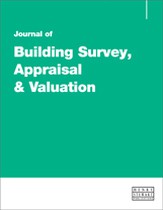Fire risk assessments for buildings of special architectural or historic interest
Abstract
This paper looks at the additional factors that should be considered when a fire risk assessment is undertaken for a building of special architectural interest. The fire risk assessor should have a comprehensive understanding of fire dynamics and its effects on traditional materials and methods of construction. Recent disastrous fires such as those at the Glasgow School of Art, Clandon Park, Rio’s Museum Nacional and Paris’s Notre Dame momentarily attracted international attention for the loss of the building and contents, but there have been few constructive suggestions for improving the situation, beyond the usual panacea of fitting sprinkler systems. Risk-based legislation allows for some leeway in applying fire safety solutions, but guidance does not address property protection, which is usually left to owners, architects and contractors to think about. During the Notre Dame fire, two sections of the stone vaulted ceiling collapsed, the first due to the collapse of the tower, the second either from the weight of firefighting water or debris. This allowed ventilation beneath the fire, like a furnace, making it hot enough to vaporise the lead roof. Oxford University is currently investigating the loss of compressive strength to limestone when subjected to heat to see if this contributed to the collapse.
The full article is available to subscribers to the journal.
Author's Biography
Steve Emery has been the Oxford University fire officer since 2016 following 15 years as National Fire Adviser for English Heritage and Historic England. Prior to this he had a 30-year career with Avon Fire and Rescue Service, his final post being 12 years as the fire officer for the City of Bath. He takes a keen interest in finding ways of protecting heritage buildings from fire, while avoiding damage to the things that make them important. He has undertaken research into the effect of room size on fire growth and is currently working with Oxford University to test different types of limestone to see how its compressive strength changes due to heating. He chairs the Institution of Fire Engineers Special Interest Group for Heritage Building, has written fire safety guidance documents for churches, historic town centres and thatched buildings and is about to publish a guide to upgrading historic doors. Steve set up and has run the very successful 3-day residential salvage course at West Midlands Fire and Rescue Service and has trained over 750 people.
Citation
Emery, Steve (2021, June 1). Fire risk assessments for buildings of special architectural or historic interest. In the Journal of Building Survey, Appraisal & Valuation, Volume 10, Issue 1. https://doi.org/10.69554/GQOC8293.Publications LLP
